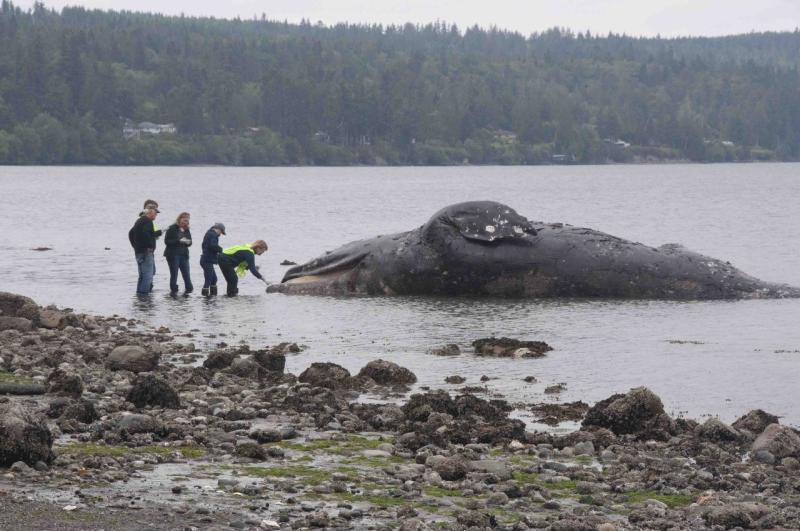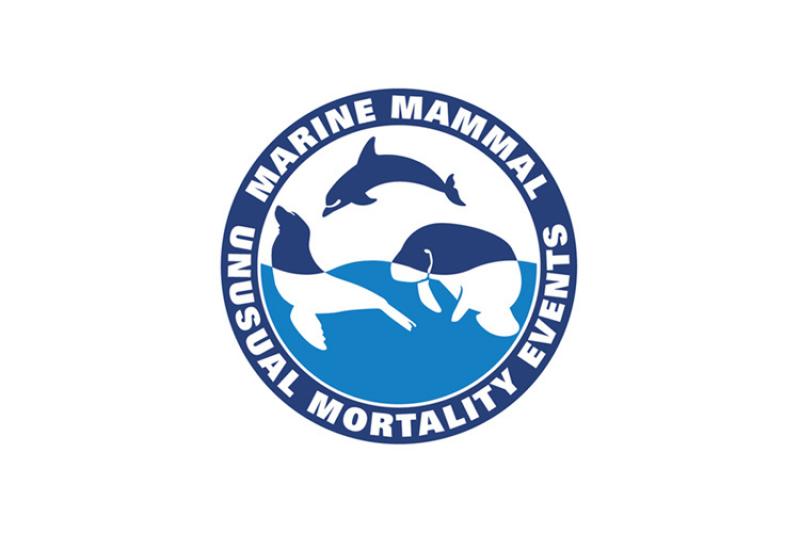The waterfront property that drew Mario Rivera and Stefanie Worwag to the Pacific Northwest about three years ago now has an extra special attraction: the 40-foot carcass of a stranded gray whale.
The whale did not end up on the couple’s rocky beach south of Port Townsend on its own. Rather, marine mammal stranding responders towed it there at the owners’ invitation. The couple volunteers for the Port Townsend Marine Science Center, responding to stranded marine mammals. They decided it would be interesting to see the whale decompose and be recycled back into the marine ecosystem.
“That’s the primary reason we did it,” Rivera said. “How many opportunities do you get to watch something like this happen right out in front of you?”

NOAA Fisheries is seeking other waterfront landowners willing to follow the Washington couple’s example and volunteer their properties for the decomposition of other gray whale carcasses. They have been washing up at an unusual pace this year. About 30 gray whales have stranded in Washington so far in 2019, the most in about 20 years.
Several of the enormous animals have stranded in the inland waters of Puget Sound and the Salish Sea. This has exhausted most of the known locations where they can be left to decompose naturally. NOAA Fisheries works closely with local, state, and other federal agencies to identify suitable sites, but we are seeking additional options this year.
By volunteering sites, landowners can help support the natural processes of the marine environment. Skeletons remaining after decomposition may be used for educational purposes, but must be registered with NOAA Fisheries.
“We’re grateful to Mario and Stefanie for supporting our stranding network and helping us find a location that works for everyone,” said Kristin Wilkinson, Northwest Coordinator for the West Coast Marine Mammal Stranding Network.
NOAA Fisheries has declared the more than 70 gray whale strandings on the West Coast this year an Unusual Mortality Event (UME), prompting a scientific investigation into the cause. Many of the whales have been skinny and malnourished, suggesting some may not have consumed enough food during their last summer feeding season in the Arctic.
The whale decomposing on Rivera’s and Worwag’s beachfront was emaciated, so it fit that pattern. Worwag is a veterinarian and assisted with a necropsy on the animal.

The gray whale population last estimated at about 27,000 animals remains strong, but an earlier UME in 1999-2000 lasted two years. Strandings continued throughout that period.
While the UME designation helps provide funding to investigate the gray whale strandings, it does not pay for handling or disposing of carcasses that can weigh up to 40 tons. That is typically the responsibility of landowners where the carcasses end up. In the absence of alternative locations, the stranding network will have little choice but to leave carcasses where they land. This can create local concerns about smell and related impacts.

The 40-foot male gray whale that Rivera and Worwag agreed to take had first drifted ashore in front of three beachfront homes near Port Ludlow. They understand the reluctance of some homeowners to have a decomposing carcass nearby, but they have found the smell less than they expected.
“Actually, it’s not too bad,” said Rivera, a retired police officer. The stranding network is testing the use of hydrated lime to speed decomposition and mask the smell, but it’s too early to tell if it’s working, he said.
He is not sure how long the whale will take to decompose, but he is interested to find out. The couple has already noticed eagles in the area, possibly scouting for food.
“This is all a big experiment for us,” he said.
Willing landowners should contact Michael Milstein at michael.milstein@noaa.gov or (503) 231-6268.



